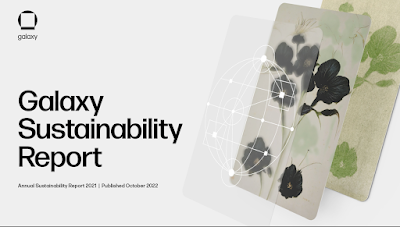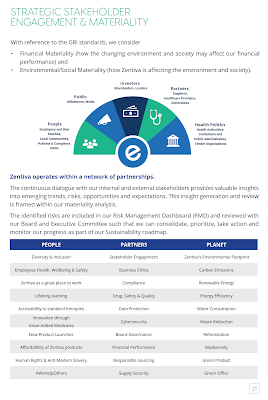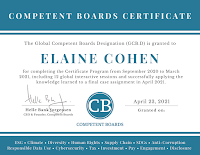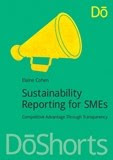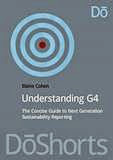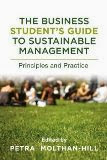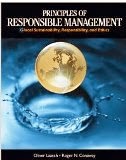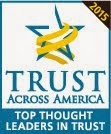# This is not an actual ESG report but the promise of a report. It's 12 pages of narrative about what the company plans to do, starting in 2023, and report on annually. But, it's something. And something is always better than nothing. Clearly considerable effort has gone into developing something.
# Presents a five pillar ESG strategy. Each pillar is apparently supported by aspirational goals, strategies to achieve those goals, and the tactics needed to implement the strategies, but none of this is shared at this time. The "report" describes the actions Cedar Fair is planning to take in each of these pillars.
#Time will tell whether Cedar Fair delivers on its ambitious promises. I have made a note in my Google calendar to check back in 2023 for the publication of Cedar Fair's first actual ESG report to see how they are doing. Since Cedar Fair states its purpose as "Make people happy", it will make me very happy to see a report that contains at least a few core data points.
Country: Ireland
Entity: Publicly traded (Nasdaq: CMPR)
Sector: Customized print,
signage, apparel, gifts, identity
merchandise
$ annual revenues: $2.9 billion
Employees: 16,000
Report: 123 pages, no frameworks
Cone-worthy 🍦🍦🍦🍦
# Super slick professional report that presents a positive picture of a company that has been implementing sustainability practice for some time.
# "Informed" by GRI and SASB, it does not apply these standards but discloses four years of data for most core metrics that these frameworks would demand, including full Scope 1, 2 and 3 GHG emissions.
# Some targets for environmental impacts (including Net Zero by 2040).
# Fabulous design (only missing navigation tools) that presents data clearly and showcases local designers.
Cone opportunities:
# Material topics are listed as those "important to us and our stakeholders", whatever that means. Sounds like plug-and-play. I'd like to see a detailed materiality assessment process in future.
# Highlight targets upfront - currently they are in-chapter. I like to see where a company is heading before I know where it's been.
Country: Canada
Entity: Publicly traded (TSX: CJR.B)
Sector: Media and content
Report: 55 pages, SASB, TCFD
# Well-structured and clearly designed report that has a fun feel. Good navigation. Interesting section on journalistic standards - a relevant topic for a media company.
# Honest responses to TCFD disclosure - for example, why the company has not set carbon targets.
# Stakeholder voices - internal and external - throughout the report in quotes with images.
Cone opportunities:
# Reference to having completed an "ESG Maturity Assessment" and a suite of goals seems great, but these are not disclosed in the report. I wonder why not? This report would be more credible if we knew what Corus is committing to.
# Would be good to see a broader set of data points in addition to DEI and carbon.

Country: UK
Entity: Privately owned
Sector: Convenience retail
Employees: 58,493
Report: 63 pages, SASB, TCFD, SDG (goal level), Assurance
Cone-worthy 🍦🍦🍦
# Double materiality assessment with a definition of what this means for EG Group
# Full suite of ESG targets in three strategic pillars, plus a set of ESG Fundamentals that are not strategic but important in terms of maintaining responsible practice (without specific targets).
# Nice focus on people with images short bios of Board members and employee testimonials.
# Good climate disclosure with detailed narrative and data across all three Scopes.
Cone opportunities:
# Data presented for one year (2021) though this is clearly not the first year of data-collection for EG Group. I recommend three years in future reports.
# I am a little puzzled at the connection between ESG targets and materiality assessment. For example, community investment is positioned at the lowest level on the materiality matrix but EG has two public community targets. Items that are highest priority in terms of materiality (product packaging and plastics, diet and health and land and biodiversity impacts) do not have dedicated targets. Although materiality "informed" target setting, the correlation is not entirely obvious. Perhaps greater alignment here might be considered in future.


Country: USA
Entity: Publicly traded (TSX: GLXY)
Sector: Financial services in digital asset, cryptocurrency, and blockchain technology sectors
Employees: 281
Report: 73 pages, GRI 2021 (referenced), SASB, TCFD, SDGs (target level), GHG Assurance
Cone-worthy 🍦🍦🍦🍦
# This is a report with a unique kind of chic and makes a strong statement. With a mission "to engineer a new economic paradigm" through blockchain technologies and the crypto economy that most people (including me) still quite don't understand, it's a report that stands out from the crowd both in content and design.
# Overview of contribution to SDGs on a target-by-target basis with relevant supporting actions.
# Background and context articles to help us understand the crypto world and how ESG is relevant.
# Galaxy uses this report to showcase the work of photographer/artist Claudia Pawlak, with a special message about art and ESG.
Cone opportunities:
# Materiality is defined as "relevance" to internal stakeholders on the one hand, and to external stakeholders on the other. What does "relevance" actually mean? Impact on? Financial benefit? This needs to be clarified.
# Great detail about Sustainability Program oversight but no goals or targets. Makes me wonder what the 10 ESG Steering Committee Members are actually overseeing.
Country: Canada
Entity: Publicly traded (MAG: TSX / NYSE A)
Sector: Silver mining
Employees: 2,929
Report: 72 pages, UNGC 10 Principles, SDG overview (goal level)
Cone-worthy 🍦🍦🍦
# A congenial first report, written in plain language that people can understand, no frills or fancy jargon.
# First internally developed materiality assessment covering "significance and relevance to MAG Silver’s business and potential ESG impacts" - the process is well described.
# Good suite of corporate ESG policies to supplement reporting.
Cone opportunities:
# It would be nice to see the adoption of a reporting framework such as GRI in future.
# Design is double spaced - difficult to read
# A final proof always helps😉 (See image below on Security)
Country: USA
Entity: Publicly traded (NASDAQ: PATK)
Sector: Component solutions provider for the leisure lifestyle and housing markets
Annual revenues: $5.1 billion
Employees: 11,000
Report: 41 pages, SASB
Cone-worthy 🍦🍦
# A focus on people, more than half of this report is about company culture and people development and community contribution. A good start in demonstrating responsible people practices.
# The section on "where we're going" describes the broad next steps for this company, clearly at the initial stages of its structured sustainability plans
Cone opportunities:
# Tip of the iceberg transparency .. this report contains a limited amount of data, partially explained by the fact that the company has just started to put in place robust data collection processes. A world of opportunity awaits for achieving greater transparency in Patrick's second report.
Country: USA
Entity: Publicly traded (Nasdaq: PAHC)
Sector: Animal nutrition
$ annual revenues: 942 million
Employees: 1,800
Report: 56 pages, GRI referenced, SASB
Cone-worthy 🍦🍦 🍦
# Phibro addresses a good range of ESG-related topics in this report, albeit most of the content is general narrative rather than specific reporting year content. The declaration that "Phibro is in the early stages of our ESG journey" is honest and credible and inspires confidence that Phibro will continue to evolve its approach and practice to include a defined strategy and targets in key areas.
Cone opportunities:
# First materiality assessment reflects issues "perceived to be most important to our customers, employees and stakeholders and are most relevant to our business" That's a good start. But it still leaves me wondering what "most important" and "relevant" mean. Is it about opinion, impact or profitability? Perhaps this could be defined more precisely.
#Material topics are not disclosed. Alongside the description of the materiality assessment process, there is a list of "beliefs". It's not clear if these are material topics or a value system.
# More pictures of animals would be nice. I love animals.

Country: UK
Entity: Owned by Associated British Foods plc (ABF)
Sector: Fashion apparel
$ annual revenues: Approx. $9 billion
Employees: 72,000
Report: 57 pages, Assurance. Primark also contributes to ABF's annual sustainability reporting.

Cone-worthy 🍦🍦🍦🍦🍦
# Primark is no stranger to reporting through its parent company Associated British Foods (ABF), but this is the first separate Primark report. It rests on the reporting foundation of ABF ABF's
2022 Responsibility Report here for reference), and is included in several sections of ABF's report, mostly narrative but some data. Certain statements in the Primark report are externally assured. As such a large business in its own right, it's a good move by Primark to add this solo venture into the world of transparency.
# Great set of Primark Cares commitments, some of which are quite bold, for example, the product commitments: improving durability of clothes, all clothes to be recyclable by 2027, all clothes to be made of recycled or sustainable sources by 2030. I think these are quite transformative for a company that is part of an industry criticized for fast-fashion, throwaway quality and resource inefficiency.
# Clear report structure in an easily navigable report that covers People, Planet and Product impacts in a coherent way, with case study examples. The narrative is easy to read, provides contextual background and avoids language that is overly gushy or superlative. It's actually a fascinating report with interesting content, reflective of a wide range of actions and impacts.
# Beyond big credit for producing a standalone Primark report, recognizing that sustainability data is included in ABF reports, I believe there is a missed opportunity to include a selection of core data points that are specifically Primark. Carbon emissions are included but there is little other data. Human resources for example, with 72,000 colleagues, and a target to strengthen the position of women at Primark - no data is presented on diversity and inclusion, women or other groups.



Country: USA
Entity: Publicly traded (OTC Pink: PYYX)
Sector: Agricultural produce
$ annual revenues:
Employees: 2,943
Report: 78 pages, GRI Core, GHG Assurance
Cone-worthy 🍦🍦🍦🍦
# Symmetrically structured report with each core chapter presenting Our Ambition, Moving the Needle, How We Measure and Our Results, supplemented with case studies where relevant. I like symmetry in reporting, it gives me the impression that reporting is intentional not random.
#A materiality matrix representing impact materiality, one of the few that do this in line with GRI requirements.
# A full suite of SMART ESG targets to 2030 including Net Zero value chain emissions by 2050. An impressive set of commitments in a first report.
# Use of case studies to demonstrate environmental and social action in practice.
# Appealing, attractive but simple design, with appropriate use of images and supporting design elements and a useful bottom navigation bar.
# Pyxus disclosure could provide a more transparent picture of its activities in future reports. For example, the (material) section on Supply Chain Integrity describes important ethical supplier management practices, but discloses no information or data about what was actually done in the reporting year. The section on Motivated, Skilled and Engaged Employees contains no data at all about employees apart from two data points on women in leadership. Seems that Pyxus disclosure muscles need flexing a little.
# Pyxus presents a materiality matrix with 12 topics, 7 of which are top-right quadrant. Yet, despite declaring GRI In Accordance: Core Option, the GRI Content Index includes only three standards: 206 (Anti Competitive Behavior), 305 (Emissions) and 413 (Communities). Health and Safety is the most significant material topic on the matrix but GRI 403 (Occupational Health & Safety) does not appear in the Content Index. The report includes a section with a couple of data points on health and safety but this should be reflected in the Index.





Country: USA
Entity: Publicly traded (NASDAQ:ROCC)
Sector: Oil & Gas
Employees: 136
Report: 35 pages, SASB
Cone-worthy 🍦🍦
# This is an ESG report in the true sense of the word, created for investors, following SASB Standards. It provides a glimpse into the world of sustainability-related financial materiality disclosure that covers only those topics defined by an investor-focused ESG framework and providing single-year data as required by the selected SASB standard. Consistent with this approach, The Chair and CEO write a joint letter to "Shareholders and other Stakeholders". While I personally look to see an impact (or double) materiality disclosure, I acknowledge Ranger Oil for adopting this approach and running with it.
# I'd like to think that, at some point in the future, Ranger Oil's leadership would write a joint letter to "All Our Stakeholders", and include a materiality assessment of impacts on people and the environment, in addition to impacts on the business.
# Most of this report is policy statements and descriptions of processes. There is little that reflects progress in this first reporting year. Hopefully the second report will offer more insights into how Ranger is delivering its policies and taking meaningful action.

Country: UK
Entity: Publicly traded (NASDAQ: SLNA)
Sector: Hospitality
Employees: 1,840
Report: 69 pages, references GRI (no Content Index)

Cone-worthy 🍦🍦🍦🍦
# This report is appealing for its familiar, straightforward back-to-basics style. It's about culture, connecting, caring and communities. As a young company, it's just ramping up its structured ESG approach, and the report explains its approach without the jargon-rich language of large company reporters. It has a simple authenticity that may resonate with its target millennial audience.
# Selina gives an honest explanation of its environmental approach, with aspirations to align with Paris on emissions, measure emissions at all locations (currently 11%), eliminate single-use plastics by 2025, rolling out low-flow shower heads globally. Sounds like these initiatives are just ramping up but the direction is set.
# Describes ESG priority impact areas aligned to SDG goals.
Cone opportunities:
# This report was published just before Selina became a publicly listed company traded on NASDAQ. It will be interesting to see Selina mature its ESG programs and disclosures to meet both regulatory and investor demands in its next report while retaining its focus on culture.
# A more detailed build-out of the ESG Strategy, defining the strategic goal in each strategy area and establishing targets and core metrics for each could help Selina advance its ESG performance and impact.
Country: Italy
Entity: Privately-owned
Sector: Food products
Employees: 209
Report: 40 pages, GRI Core, covers two years, SDGs (goal level)

Cone-worthy 🍦🍦🍦🍦
# This report applies a GRI structure by dedicating a chapter to each material topic (fortunately there are only five 😁). Each chapter follows the same flow which includes a description of impacts, core activities, measures, objectives and stakeholder cooperation. This is an earnest approach to meeting the requirements of GRI while ensuring a full and balanced disclosure. The fact that objectives are included for each material topic is evidence of a considered and focused approach to disclosure.
# The materiality assessment clearly explained: "How do our actions as a company have an effect, both positive and negative? This was the question at the heart of the impact analysis which the company carried out in autumn 2021. It focused on social, environmental, and economic aspects."
# Three-year data summary tables included at the end of the report.
# Most of the content of this report is focused on actions rather than evergreen policy.
Cone opportunities:
# Change the title. "Sustainability is part of our DNA" is one of the most overused and meaningless phrases in the history of sustainability reporting. But maybe a first time reporter might not know that.


Welch’s 2021 CSR ReportUSA
Entity: Privately-owned by cooperative
Sector: Fruit-based food and beverage
Report: 12 pages
Cone-worthy 🍦
# Welch's is a private organization owned by a cooperative of about 700 family farms across the U.S. This first report deserves credit for being a first report.
# The report provides a high level overview of a strategic approach to corporate responsibility.
# Selected data points demonstrating progress are presented.
# While any report is better than no report, Welch's has a great opportunity to enhance the transparency of its reporting to include meaningful data and more detailed practices and progress. As it stands, the report presents a summary of progress in each strategy area, but the selection of datapoints seems rather random, or possibly, the only positive data the organization has available or can present. For example, one data point is that 98% of growers are tracking and reporting their sustainable farming practices. If there is such a wealth of data available from almost 700 growers, Welch's has an opportunity to share a glimpse of the broader impact of the cooperative's activities and its wider impact on farming and environmental practices. The fact that growers report is less useful to know than what they report.


Country: Czech Republic
Entity: Privately-owned
Sector: Pharmaceuticals
Employees: 4,700
Report: 35 pages, GRI referenced (no Content Index) GHG Assurance

Cone-worthy 🍦🍦🍦
# This is a credible report of a growing company clearly, in the early stages of its structured sustainability journey. As a privately owned company, it does a meaningful job of presenting its position across a range of sustainability topics with thought and consideration. Data is presented selectively, with the most transparency in environmental metrics over two years.
# A strategic framework – People Partners Planet – creates a language and structure for this company’s sustainability plans, and a set of 30 material topics and 10 goals underpin its commitments, including carbon neutrality by 2030 and gender balance in leadership roles by 2026.
# This report is aesthetically designed. The layout is clean, tables and charts are clear and creative design elements make this report a pleasure to view.
# As this company advances its plans and becomes more mature in its reporting, there is an opportunity for greater transparency in key areas such as human resources, safety and supply chain.
# Beyond the direct ESG impacts of Zentiva’s business, it would be of value to understand its impact on healthcare; topics related to access and affordability, innovation, patient engagement etc. are core to Zentiva’s contribution to sustainable development. Greater discussion of these topics would help balance this disclosure and put its sustainability efforts in context.
# Stakeholders may be interested to understand more about the materiality analysis– stated as conducted using S&Ps ESG self-audit framework – for example, how the topics are defined for Zentiva and why they are material from an impact and/or financial materiality standpoint.
BONUS REPORT
I am a fan of industry and trade association reports, as I believe they provide a helpful overview of sustainability issues that matter from an industry perspective and set standards that companies in the industry can learn from and align with. This first 40-page report from the World Coatings Council is well worth a look.
*************
That's all, folks. I expect there will be many many first time reports in 2023, so expect a much longer list this time next year. In the meantime, Happy 2023! and Happy Reporting!
elaine cohen, GCB.D: ESG Competent Boards Certified (2021), Sustainability Strategy and Disclosure Specialist, former HR Professional, Ice Cream Addict. Owner/Manager of Beyond Business Ltd, an inspired Sustainability Strategy and Reporting firm having supported >160 client reports to date; author of three books and several chapters on Sustainability Reporting and the Human Resources connection to CSR; frequent chair and speaker at sustainability events and judge in several sustainability awards programs each year. Contact me via Twitter , LinkedIn or via Beyond Business 











